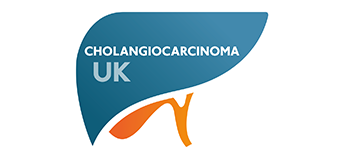AMMF’s Virtual 2021 European Cholangiocarcinoma Conference
-
Abstract No 3
-
The role of mesenchymal cells in cholangiocarcinoma
Mireia Sueca-Comes1, Cristina Rusu2, Pamela Collier1, Catherine Probert1, Nigel P. Mongan3, David O. Bates1, Anna M. Grabowska1
1Division of Cancer and Stem Cells, Centre for Cancer Sciences, Biodiscovery Institute, University of Nottingham, Science Road, Nottingham, NG7 2RD
2Institute of Integrative Systems Biology (I2Sysbio), University of Valencia and CSIC, 46980 Valencia, Spain and SeqPlexing SL, 46980 Valencia, Spain
3Biodiscovery Institute, School of Veterinary medicine and Science, University of Nottingham, NG7 2RD, UK
Cholangiocarcinoma (CCA) is an aggressive and heterogeneous malignancy. Treatments are limited and often ineffective due to the lack of understanding of its molecular pathogenesis. CCA is known as a highly desmoplastic tumour, but the functional role of this reactive tumour microenvironment (TME) is not fully elucidated. Therefore, we believe that investigating the TME and its role in CCA progression could lead to more effective therapeutic treatments for managing this devastating cancer.
3D spheroid models were established from both CCA-patient-derived xenografts and a range of cell lines. The models were characterised and validated by both Live&Dead staining using calcein-AM to stain the live cells and ethidium homodimer-1 to stain the dead cells; and immunohistochemistry using H&E and the proliferation marker Ki67. The effect of the mesenchymal stem cells (MSCs) in driving proliferation was evaluated in these models and a transcriptomic analysis was performed to identify potential specific targets.
CCA-derived spheroids stayed viable and retained histological features frequently found in CCA tumours, confirming that it is a relevant system to investigate CCA. Interestingly, the cell proliferation was found to be promoted by the presence of mesenchymal cells. In the PDX-based models, it was noted that the presence of stromal support enhanced the formation of spheroids, highlighting the need for the exchange of autocrine/paracrine signals with the TME. In addition, RNA-sequencing expression data demonstrated that relevant CCA pathways were active in the presence of MSCs.
Based on initial findings, 3D spheroid models appear promising due to their histological resemblance to patient tumours. In addition, this study could provide new insights in the crosstalk between the tumour and the stroma, ultimately providing promising targets for the treatment of this disease.
To view the poster, click here
Back to previous page






